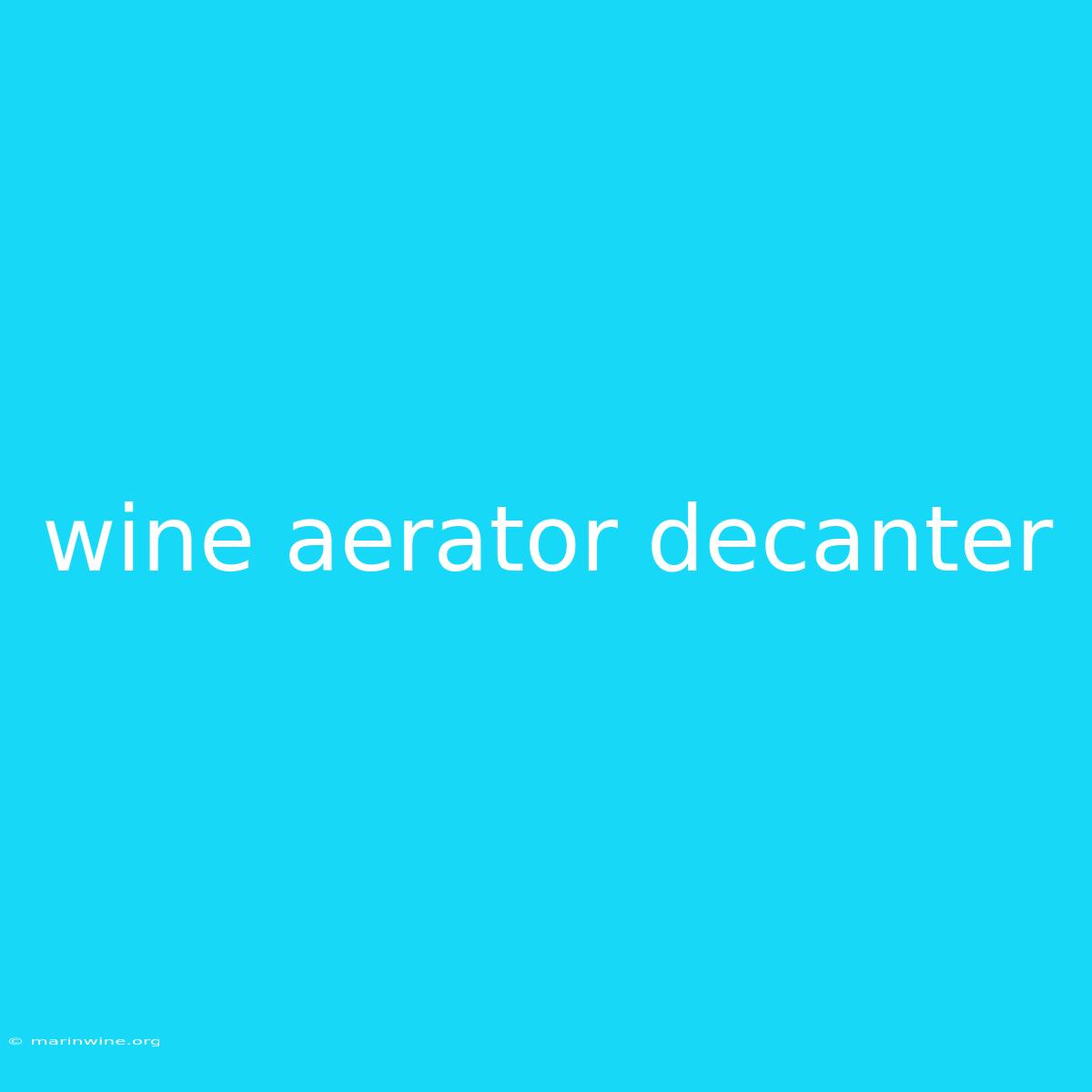Unleashing the Flavors: Wine Aerators & Decanters Explained
Have you ever wondered why some wines taste better after "breathing" for a while? This is where wine aerators and decanters come into play. These handy tools help unleash the full potential of your wine, allowing its complex aromas and flavors to shine.
Editor's Note: This article delves into the world of wine aerators and decanters, exploring their benefits, how they work, and which one is best for your wine collection.
Why is Aeration Important?
Wine needs oxygen to fully develop its flavors and aromas. When bottled, wine is sealed and protected, but this can trap volatile compounds that contribute to its complexity. Aerating wine exposes it to oxygen, allowing these compounds to react and mellow, creating a smoother, more enjoyable experience.
Decanters: Elegant Vessels for Enhanced Wine
Decanters are beautiful glass vessels designed to aerate wine by increasing its surface area. As wine pours into a decanter, it comes into contact with oxygen, encouraging the release of aromas and softening tannins.
Decanter Benefits:
- Enhanced Flavor: Decanting improves the overall flavor profile of the wine, making it more complex and balanced.
- Sediment Removal: Some wines develop sediment over time. Decanters allow you to pour the wine gently, leaving the sediment behind for a cleaner, more pleasant experience.
- Aesthetics: Decanters add a touch of elegance to any wine occasion. They are a beautiful way to showcase your wine collection.
Wine Aerators: Quick and Convenient Oxygenation
For those who prefer a more convenient approach, wine aerators are compact devices that inject air into the wine as it pours. They come in various styles, from simple pour spouts to sophisticated pump-action aerators.
Aerator Benefits:
- Speed & Efficiency: Aerators allow you to enjoy a better-tasting wine quickly and easily.
- Portability: Aerators are compact and travel-friendly, making them perfect for enjoying wine on the go.
- Cost-Effective: Aerators are generally more affordable than decanters, making them an attractive option for budget-conscious wine enthusiasts.
Choosing the Right Tool for Your Wine
- Red Wines: Generally benefit the most from aeration. Choose a decanter or aerator based on your preference for speed, aesthetics, and budget.
- White Wines: While not as common, some white wines, particularly aged ones, can benefit from a brief aeration. Use a simple aerator for a quick boost.
- Young Wines: Young wines may not require aeration as they have yet to develop full complexity.
Key Takeaways:
| Feature | Wine Aerator | Decanter |
|---|---|---|
| Aeration Method: | Injects air as wine pours | Increases surface area |
| Speed: | Fast | Gradual |
| Convenience: | Portable and quick | Requires time and care |
| Aesthetics: | Varied, from simple to elegant | Often decorative |
| Cost: | Generally more affordable | Can range in price |
In Conclusion:
Both wine aerators and decanters are valuable tools for enhancing your wine experience. Choose the method that best suits your needs, budget, and the type of wine you're enjoying.
Remember: Wine is a journey, and these tools help you appreciate its nuances and complexities. So, raise a glass to the art of aeration, and savor the delicious flavors!

